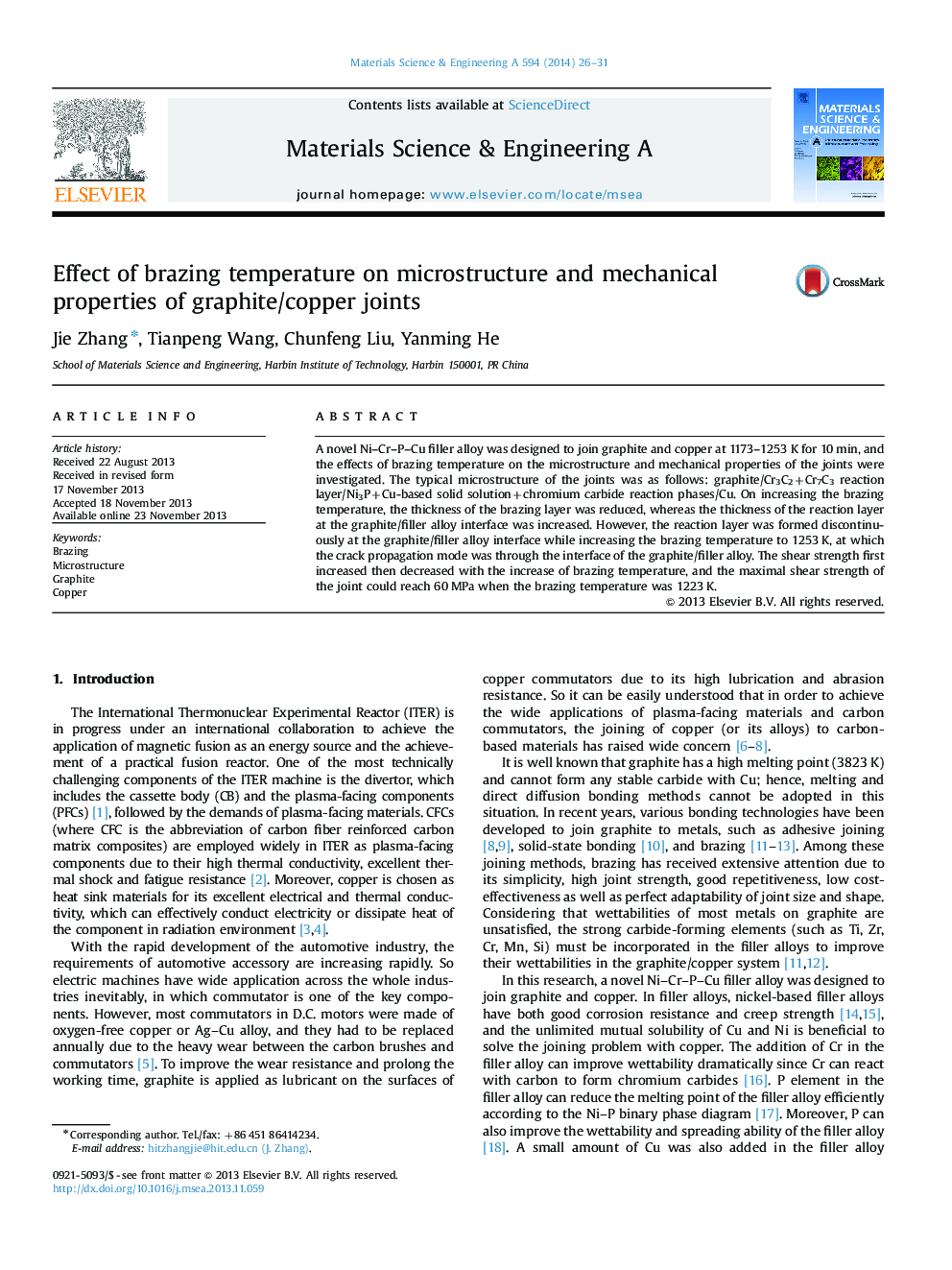| Article ID | Journal | Published Year | Pages | File Type |
|---|---|---|---|---|
| 1575437 | Materials Science and Engineering: A | 2014 | 6 Pages |
A novel Ni–Cr–P–Cu filler alloy was designed to join graphite and copper at 1173–1253 K for 10 min, and the effects of brazing temperature on the microstructure and mechanical properties of the joints were investigated. The typical microstructure of the joints was as follows: graphite/Cr3C2+Cr7C3 reaction layer/Ni3P+Cu-based solid solution+chromium carbide reaction phases/Cu. On increasing the brazing temperature, the thickness of the brazing layer was reduced, whereas the thickness of the reaction layer at the graphite/filler alloy interface was increased. However, the reaction layer was formed discontinuously at the graphite/filler alloy interface while increasing the brazing temperature to 1253 K, at which the crack propagation mode was through the interface of the graphite/filler alloy. The shear strength first increased then decreased with the increase of brazing temperature, and the maximal shear strength of the joint could reach 60 MPa when the brazing temperature was 1223 K.
